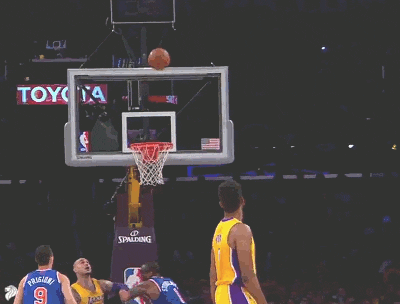We believe the best players are the top scorers
Published
When we think about how basketball works, we think of it like this.

Basketball is a high-scoring arms race. We love the fast pace and the points. When judging players, we think the player who scores the most must be doing the most to help their team win. And it's true–the highest scoring player did the most good stuff for their team (on offense).

But a player's points don't tell us how much they also hurt their team by missing shots or turning the ball over. Their scoring doesn't tell us anything about "assisting" a teammate's made shot, or their skill for grabbing do-overs when a teammate misses (rebounds). At best, a player's made shots (scoring) make up about half of their offense.
Scoring also doesn't tell us anything about the other half of the game played on defense. There is a whole other team also trying to win, too!
Overall, a player's points only count about ⅛ of the workload that decides the game. That's wild.

But doesn't scoring points matter more?
The rules whisper, 'not really.' There is only one ball. Teams are forced to take turns. When a player shoots, they spend one of their team's 100 or so possessions for the game. And when they spend it, it's spent. Next turn.
- Best case? They make it, then the other team gets a turn.
- Worst case? They miss or turn it over, also giving the other team a turn.
Until basketball adopts a "winner's out" rule, or rolls nine more balls 🏀🏀🏀🏀🏀🏀🏀🏀🏀 onto the court to play more like laser tag ("Just take as many shots as you can"), the rules create a game won by spending turns better than the other team.
We can tell "better turns" from the game score. Yes, it looks like points, but it compares both teams' total effort on both ends, assumes the same number of possessions, and tells us who is ahead by how much.
We can't tell any of that from a player's points. We can tell a top-scorer did the most good on offense, but not whether they also did more bad than good overall. Meanwhile, low-scoring players often do more good than bad. We don't notice either one because we fixate on their points, not their whole contribution.
Don't believe the best players are always the top scorers.
When we watch a scorer, we should at least count their misses.
Right, Nick? 😆
